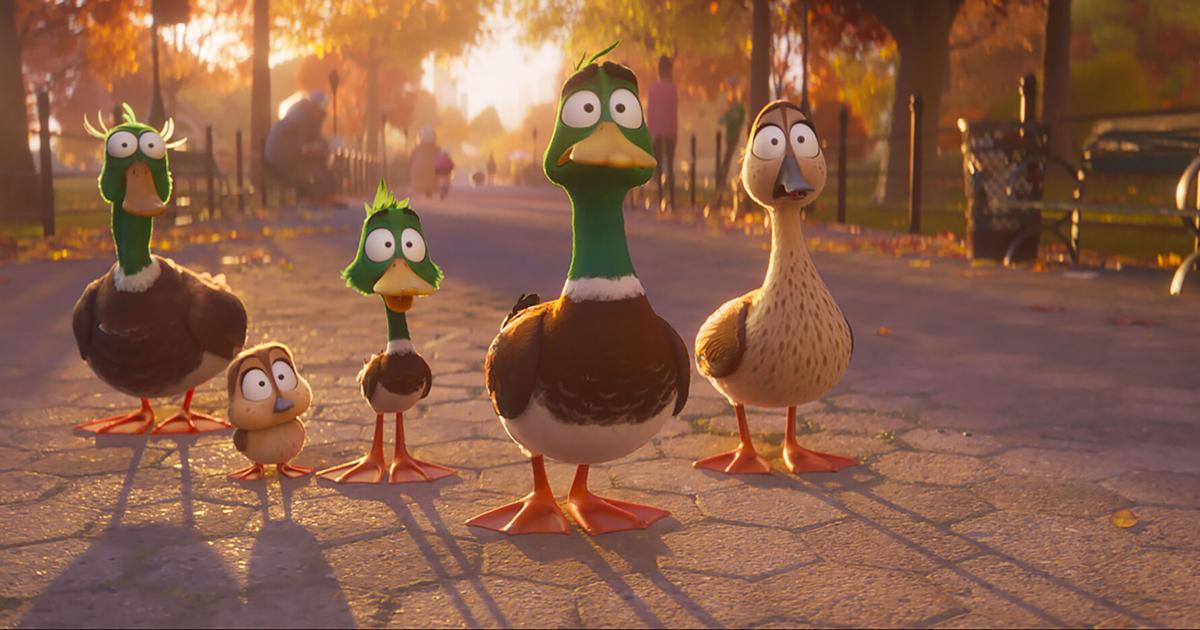
#inform-video-player-1 .inform-embed { margin-top: 10px; margin-bottom: 20px; }
#inform-video-player-2 .inform-embed { margin-top: 10px; margin-bottom: 20px; }
Two notable December releases take anthropomorphized animals down very different paths: the French-Spanish “Robot Dreams” and the American “Migration.”
“Despicable Me” studio Illumination took a step away from frenetically paced big-budget fare by partnering with French cartoonist and filmmaker Benjamin Renner on “Migration.”
The tale of a duck family led by an overly cautious dad (voiced by Kumail Nanjiani) and steady mom (Elizabeth Banks) on its first winter migration doesn’t feel like other Illumination offerings. Written by Mike White, it’s told at a slightly slower tempo, with beautiful vistas and characters rendered in a more watercolor-influenced style than the hard plastic look of the movies with Minions.
“Kumail, to me, has a very Jack Lemmon quality — he’s like an Everyman with a heightened comic voice,” White said. “Elizabeth is such a deft comedian and brought so much to it. The first time they came in and played with the material, I was blown away.”
There are genuinely funny — and scary — moments. There’s a Looney Tunes-inspired sequence in which a pigeon (voiced by Awkwafina) has, shall we say, extreme difficulties with New York traffic.
“It used to be different,” Renner said. “When she was first struck, it was a tire that was running over her, so she was completely flat, almost like, ‘She’s flat; she can’t be alive.’ So we reworked, reworked, reworked until we had the best way.”
Explaining the inspiration for the film’s scariest scene, in which the little ducks are either held captive or generously helped by two ancient herons (one voiced by the inimitable Carol Kane), Renner tells a freaky tale from his own life. Traveling in Japan with his girlfriend, they ended up in a remote, mountain Airbnb.
“The only thing that was written on the ad was, ‘I am a cook.’ And I started thinking, ‘He’s cooking lost tourists.’ I started to freak out a little bit because of the mood and the mansion and (the language barrier),” Renner said. “The place is crowded with Victorian dolls with very beautiful hair. ‘He is going to cook us, that’s for sure. Then he’s transforming us into little dolls.’ I found a fire extinguisher that I slept with for the whole night.”
On the other end of the budget scale is the dialogue-free French-Spanish “Robot Dreams.” The hand-drawn charmer, based on Sara Varon’s graphic novel, evolves from a freewheeling look at the adventures of a dog and his robot friend to something much deeper as the tight-knit pair endure a lengthy separation.
Spanish writer-director Pablo Berger had only made live-action films before but found himself so moved by the simply drawn pages, he couldn’t let it go.
“Making the film had an even more profound effect on me than I thought it would,” he said. “When I watch this film, I think of people I lost in the past. It made me very conscious to be a better friend.”
Still, the tonal shifts necessitated by the subject matter can be pretty wide swings — especially for an animated film about a dog and his robot that might draw young kids.
“The graphic novel wasn’t made for kids, though with the anthropomorphic characters, kids will love the design,” Berger said. “But I made this film for adults. I made it for me as the primary audience.”
#inform-video-player-3 .inform-embed { margin-top: 10px; margin-bottom: 20px; }
